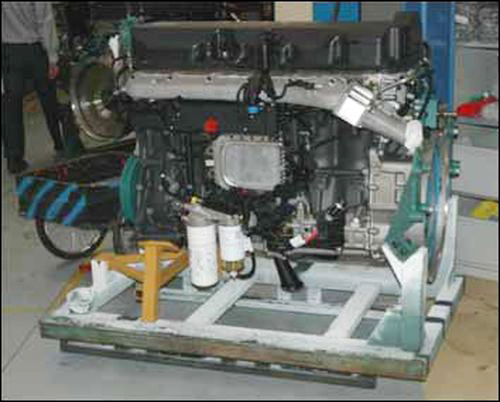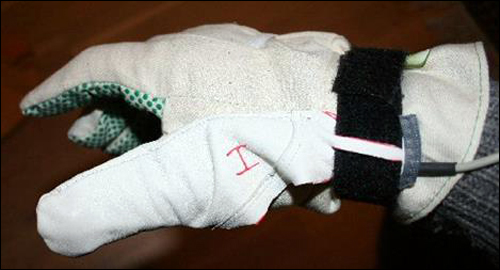Aug 21, 2013For the past seven years, workers at Volvo's powertrain factory in Skövde, Sweden, have been identifying steel support brackets by means of a low-frequency (LF) 125 kHz RFID reader strapped to a sleeve, reader antennas attached to the thumb of a work glove and a PDA worn on the belt. The system tells users (via an audio voice-recording) which bracket they have in their hands every time they pick one up, and instructs them where to put it. The brackets are used to protect a powertrain (an engine and transmission) as it is shipped to a customer. The solution provider, Advanced Manufacturing Consultancy (AMC), is now marketing an updated version of the technology for users in the manufacturing industry that would be easier to wear and faster to operate, by employing a smaller reader that communicates with the PDA via ZigBee technology.
The system—which AMC initially designed for the Volvo powertrain factory—includes AMC's own RFID tags and a reader with a built-in HID Global reader engine, as well as Datema Mobility software to manage the collected read data. The factory builds engines and transmissions according to customer specifications. There is a great deal of variety in those specifications, the company reports, based on the country in which a particular customer is located. Each powertrain is mounted on a base frame with a combination of various steel support brackets, in order to ensure that it is not damaged during shipping, and is then placed within a wooden box. The plant utilizes a total of 60 to 70 brackets in varying configurations and sizes. Upon receiving the powertrains from the factory, a customer returns the frame and brackets. Staff members at Volvo Powertrain then remove the various brackets from the boxes in which the powertrains were shipped, and place them in a large bin to be sorted later.
According to the company, the sorting process posed a major challenge. Each bracket had to be identified and stored within a specific bin along with similar brackets, so that they could be accessed for the next shipment. However, workers often had trouble determining which bracket was which—the difference between them could sometimes be as minor as the location of a screw hole. Employees thus had to be trained to identify each item, and the process of visually inspecting them was time-consuming and error-prone.
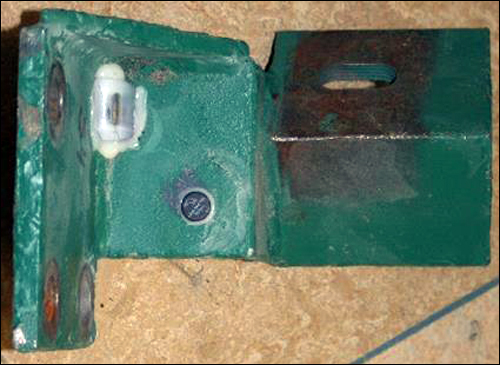
To resolve the problem, Volvo sought an automated system that would make sorting easier and eliminate errors, thereby ensuring that no delays in shipments occurred due to the proper bracket not being in the expected bin. Because the brackets are so heavy (weighing up to 55 pounds apiece), employees needed a way to carry an item with both hands and still be able to easily identify it.
To that end, AMC worked with Volvo to create a solution that would enable personnel to identify a bracket simply by picking it up. Bob Forslund, AMC's owner, says that it would be impractical for a worker to carry a handheld reader in one hand to interrogate a tag, while holding a heavy bracket in the other. So instead, he developed a solution by which a reader is attached to a user's arm via a cuff, with two reader antennas built into a thumb cover worn over a work glove. The device then has a Bluetooth connection to a portable computer.
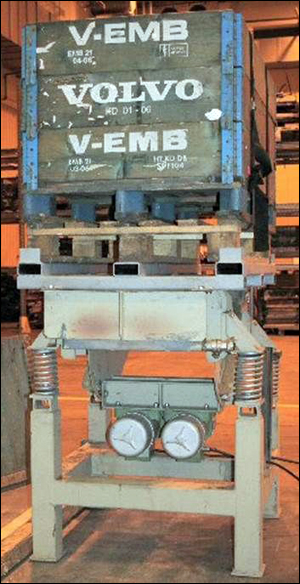
Volvo suggested using a coin-shaped LF tag that could be glued to a flat surface on each bracket. Forslund also developed and built a glass-encased RFID tag inserted into a special housing that could be attached to a 90-degree weld joint using a hot-melt adhesive. Both types of tags, he says, were each attached to 50 brackets, which then underwent a regimen of mechanical shaking (in a vibrator set at 26 hertz) to approximate the abuse that tags might need to sustain during seven years of frequent shipments to and from a customer's site. The test results indicated that all of the coin-shaped tags were destroyed, whereas all AMC tags survived.
AMC constructed a reader that attaches around a person's upper arm via an arm cuff, and is wired to an antenna built into a thumb cuff that fits over a glove. A Motorola PDA was then used to receive the RFID read data (the unique ID number of each interrogated tag) via a Bluetooth transmission from the reader. The Datema software residing on the PDA would identify the item and the bin in which it belongs, and instruct the worker accordingly via an audio recording played through the PDA's speaker or an earphone. The PDA forwards that data to the software residing on the factory's database, thereby creating a digital record of how many times each bracket was used.
Prior to being shipped to customers, each powertrain, along with the brackets on which it is mounted, is spray-painted. Consequently, each bracket periodically needs to have the paint stripped off its surface. The software tracks the number of times each bracket has been shipped (and thus painted), and can then alert the worker receiving and sorting brackets when a specific bracket needs to be depainted. Prior to the RFID technology's installation, the company had to estimate when the paint needed to be stripped, and brackets were often depainted more frequently than necessary as a result.
During the first two years following the technology's implementation, the company applied tags to a total of about 45,000 brackets, entering each tag's ID number into the Datema software residing on Volvo's onsite database. Thanks to the RFID solution, Forslund says, workers no longer require training to identify each bracket, and the sorting process is now faster and error-free, which has led to more on-time shipments of goods.
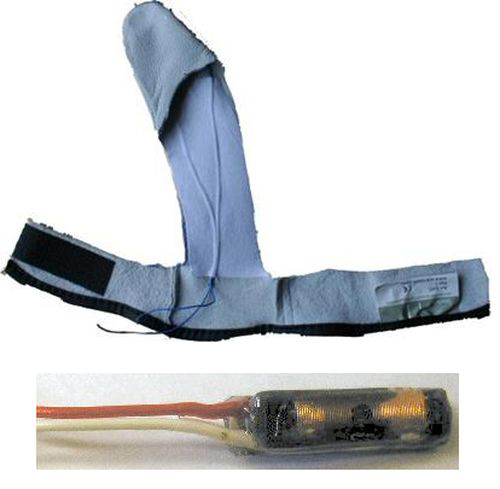
However, Forslund notes, advances in technology make it possible for AMC to offer the solution in a way that would be even more convenient for workers. With today's reader hardware, he says, he can produce a smaller reader to be attached to an individual's wrist, rather than the upper arm, enabling the wires to the two antennas to be shorter and less cumbersome. What's more, he adds, the Bluetooth technology requires several seconds to transmit after it has gone to sleep and been re-awoken, while ZigBee technology could accomplish the same thing much faster. According to Forslund, the ZigBee-based version would operate longer before its battery would require recharging, since it could hibernate more frequently than the Bluetooth model, and thus use less power.
The technology is suitable for any environment in which workers pick and sort goods for manufacturing, Forslund indicates, especially for heavy items, such as in the automotive industry. Volvo did not immediately respond to a request for comment regarding the technology.

